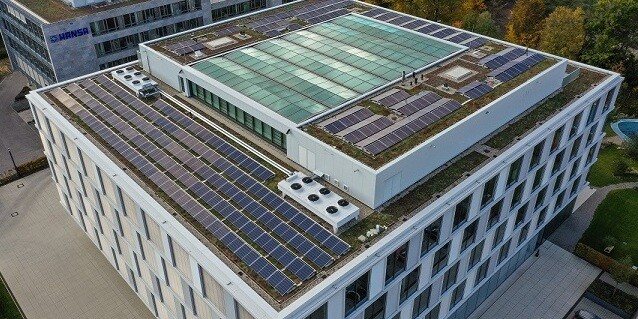
AEB is climate-neutral and plans 25% cut in carbon emissions
AEB achieves climate neutrality in 2022 with green policies and offset measures. Plans for 2023 include cutting CO2 emissions by 25% despite company growth.

AEB achieves climate neutrality in 2022 with green policies and offset measures. Plans for 2023 include cutting CO2 emissions by 25% despite company growth.
AEB will become climate-neutral in 2022 thanks to a range of climate-friendly measures coupled with offsets for the carbon emissions it cannot avoid. We are also pursuing an ambitious path of “first avoid, then reduce, then offset” to cut its carbon emissions. The aim is to slash emissions by 25% by the end of 2023 – even amid an anticipated surge in revenues and workforce. AEB wants its climate protection program to play an active role in helping achieve the 1.5°C target of the Paris Climate Accords.
Sustainability focus areas include business travel, fuel consumption, commuting, and food offered at the company. “Protecting the climate and environment are top priorities for AEB, right alongside our business success and social engagement. This is evident throughout the company and in much of what we do,” remarks Elisabeth Götting, who heads the sustainability project at AEB.
The company operates green data centers with a sustainable energy concept for its cloud products and solutions, relies on green electricity for its office sites, and has had a policy in place for over a decade to reduce emissions from its fleet of company cars. "And we are continuously working on making our commitment in everyday life even more tangible for our customers and colleagues," says Elisabeth Götting.
AEB has focused its carbon-reduction efforts on the areas of business travel, fuel consumption, employee commuting, and food purchasing to meet its goals by the end of 2023. Initiatives include switching to EVs, subsidizing the use of public transit, booking climate-friendly hotels when employees travel for business, and reducing the amount of meat consumed in the company cafeteria.
AEB’s activities do not stop at its doorstep, however. “The goal is to act as a sustainability multiplier,” explains Christian Bylda-Hermens, who co-heads the sustainability project at AEB. “We’re just one company, a small cog in the wheel. And we must do our part, no question. But our impact is multiplied when we partner with others.”
To offset its own carbon emissions and develop a plan for reducing them, AEB began by having its greenhouse gas emissions evaluated. The evaluation drew upon data from 2019, the last year of normal business operations before the Covid-19 pandemic. This established an appropriate benchmark for comparing future years without pandemic-related disruptions.
The measurements included not only CO2 emissions but also emissions of the six other greenhouse gases cited in the Kyoto Protocol, which were converted into CO2 equivalents. AEB is investing in an internationally recognized and certified climate protection project to offset the emissions calculated for 2019 and formally achieve climate neutrality for 2021 and 2022.
The carbon offset AEB selected is a reforestation project in the Kikonda Forest Reserve in Uganda spanning 10,000 hectares and displacing some 18,000 metric tons of CO2 equivalents annually. The project is Gold Standard–certified by TÜV Süd and advances other UN Sustainable Development Goals such as quality education, clean water, and decent work.
What is the detailed breakdown of AEB's carbon footprint? What's included in our offset measures? How do we live social responsibility at AEB? You can find the answers to these and many more questions on our dedicated sustainability page.